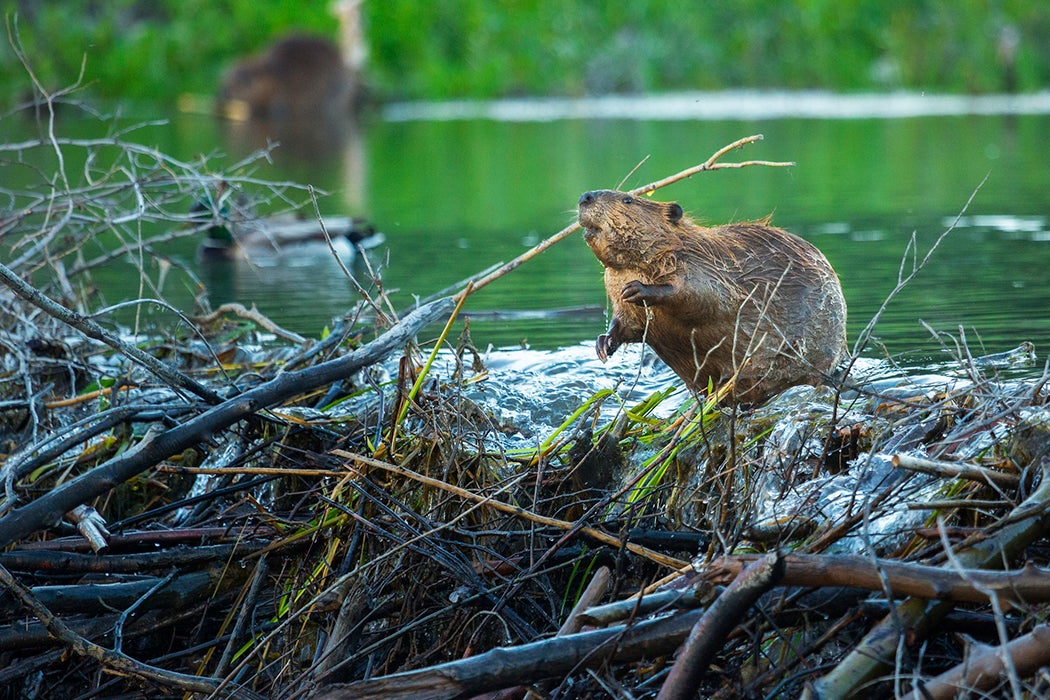North America used to be crawling with beavers. Over the first few hundred years of European settlement, beavers were decimated, in part as result of the fur trade and in part because their trademark dams caused inconvenient floods. But in recent decades, beavers have been making a comeback, in some cases aided by deliberate reintroduction efforts. Good thing, too: beaver dams may play an important role in water management, helping to store and even recharge depleted groundwater.
Beavers are called ecosystem engineers, as their dams can completely alter the water flow of small streams. Beavers build their homes, called lodges, in the slow-moving ponds that result. An area with a high beaver population will be covered with these ponds and slow-moving streams. According to biologist Justin P. Wright and colleagues, these habitat modifications have far-reaching benefits. Fish and waterbirds utilize beaver ponds as well. More importantly, when spread across the landscape, the beaver ponds create entirely new habitats. What might be continuous forest without beavers becomes a patchwork of forests and wetlands with them.
The effect persists after the beavers move on. Behind the dams, nutritious sediments accumulate. The typical dam lasts around ten years, but after that, without the beavers around to maintain it, the dam will collapse and the pond will dry up. The areas formerly covered by water become lush meadows, supporting additional species of plants. Beavers can do significant local damage through feeding and chopping trees for building materials, but the overall landscape of forest, wetland, and meadows supports much higher plant biodiversity than without beavers.
Beavers may also impact the water itself. Biologist Richard Lawrence Klotz explains in Northeastern Naturalist how sediment deposition and slower stream velocity—the same factors that alter vegetation-raised water levels—create conditions for reducing nitrogen pollution in streams. The ponds provide habitat for microbes that can remove nitrogen compounds from the water, and the reduced water velocity gives them time to do their work. The result is fewer nitrates (a key component of fertilizer and cause of eutriphocation and dead zones) flowing downstream and reaching the ocean.
Of course, despite their benefits, beavers still have their detractors. Homeowners, for example, might not appreciate the long term ecosystem benefits of beavers when their yard is flooding. Beavers are classified as a nuisance in many states. Beavers tend to recolonize areas where they are removed, so trapping or killing is a temporary solution. Fortunately, flow devices, sometimes sold as “beaver deceivers,” can be used to regulate the water level, lowering the water level enough to end the problem of beaver-related flooding while leaving the dam and pond in place. As beavers’ benefits become more widely known, scientists hope that people will adjust their attitudes towards them accordingly.







